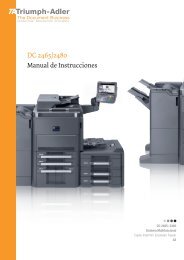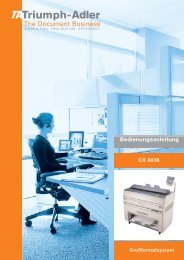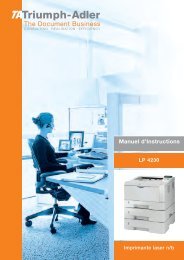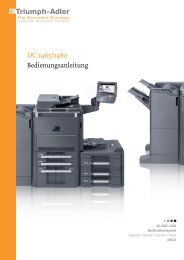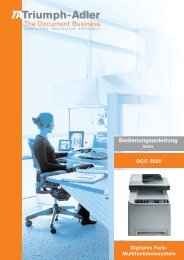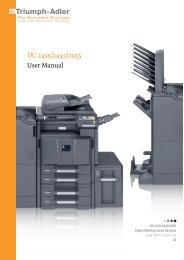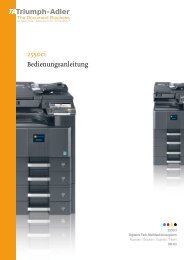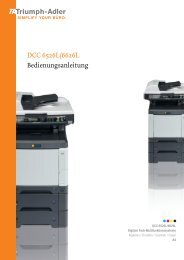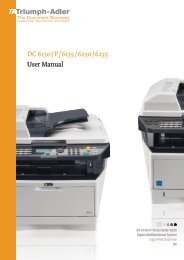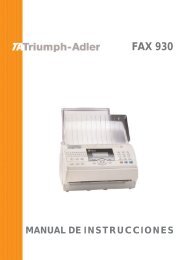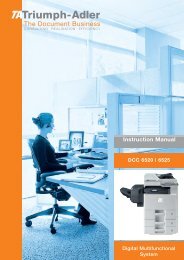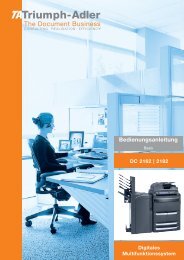Instruction Handbook - TA Triumph-Adler
Instruction Handbook - TA Triumph-Adler
Instruction Handbook - TA Triumph-Adler
Create successful ePaper yourself
Turn your PDF publications into a flip-book with our unique Google optimized e-Paper software.
General Guidelines<br />
The machine is designed to print on standard copier paper, but it can<br />
also accept a variety of other types of paper within the limits specified<br />
below.<br />
Note The manufacturer assumes no liability for problems that<br />
occur when paper not satisfying these requirements is used.<br />
Selection of the right paper is important. Using the wrong paper can<br />
result in paper jams, curling, poor print quality, and paper waste, and in<br />
extreme cases can damage the machine. The guidelines given below<br />
will increase the productivity of your office by ensuring efficient, troublefree<br />
printing and reducing wear and tear on the machine.<br />
Paper Availability<br />
Most types of paper are compatible with a variety of machines. Paper<br />
intended for xerographic copiers can also be used with the machine.<br />
There are three general grades of paper: economy, standard, and<br />
premium. The most significant difference between grades is the ease<br />
with which they pass through the machine. This is affected by the<br />
smoothness, size, and moisture content of the paper, and the way in<br />
which the paper is cut. The higher the grade of paper you use, the less<br />
risk there will be of paper jams and other problems, and the higher the<br />
level of quality your printed output will reflect.<br />
Differences between paper from different suppliers can also affect the<br />
machine's performance. A high-quality printer cannot produce highquality<br />
results when the wrong paper is used. Low-priced paper is not<br />
economical in the long run if it causes printing problems.<br />
Paper in each grade is available in a range of basis weights (defined<br />
later). The traditional standard weights are 60 to 120 g/m 2 (16 to 31.9b).<br />
Paper Specifications<br />
The following table summarizes the basic paper specifications. Details<br />
are given on the following pages:<br />
Item Specifications<br />
Weight Cassette: 60 to 120 g/m² (16 to 31.9 lb/ream)<br />
MP tray: 60 to 220 g/m² (16 to 58.5 lb/ream)<br />
Thickness 0.086 to 0.110mm (3.4 to 4.3 mils)<br />
Dimensional<br />
Accuracy<br />
±0.7 mm (±0.0276 inches)<br />
Squareness of<br />
Corners<br />
90±0.2°<br />
Moisture Content 4 to 6%<br />
Direction of Grain Long grain<br />
Pulp Content 80% or more<br />
2-2 Loading Paper



